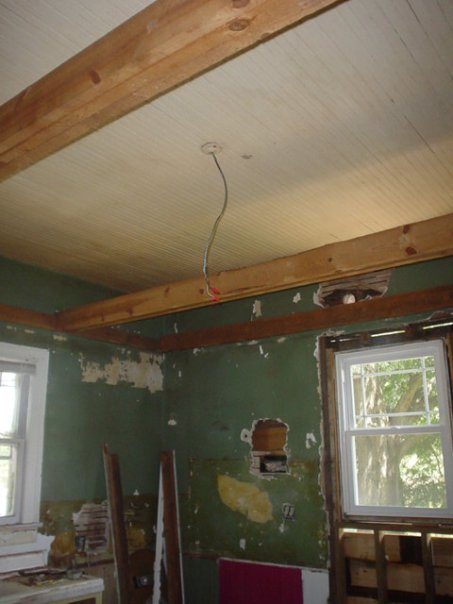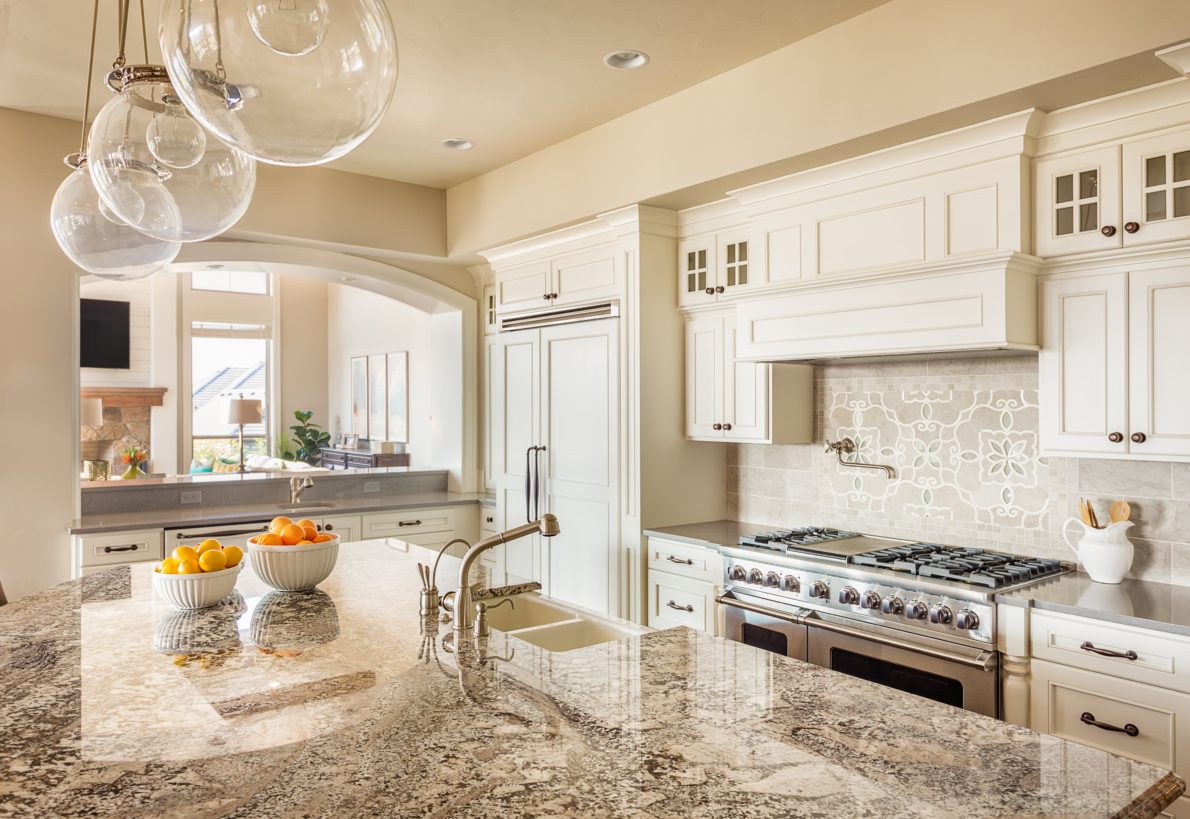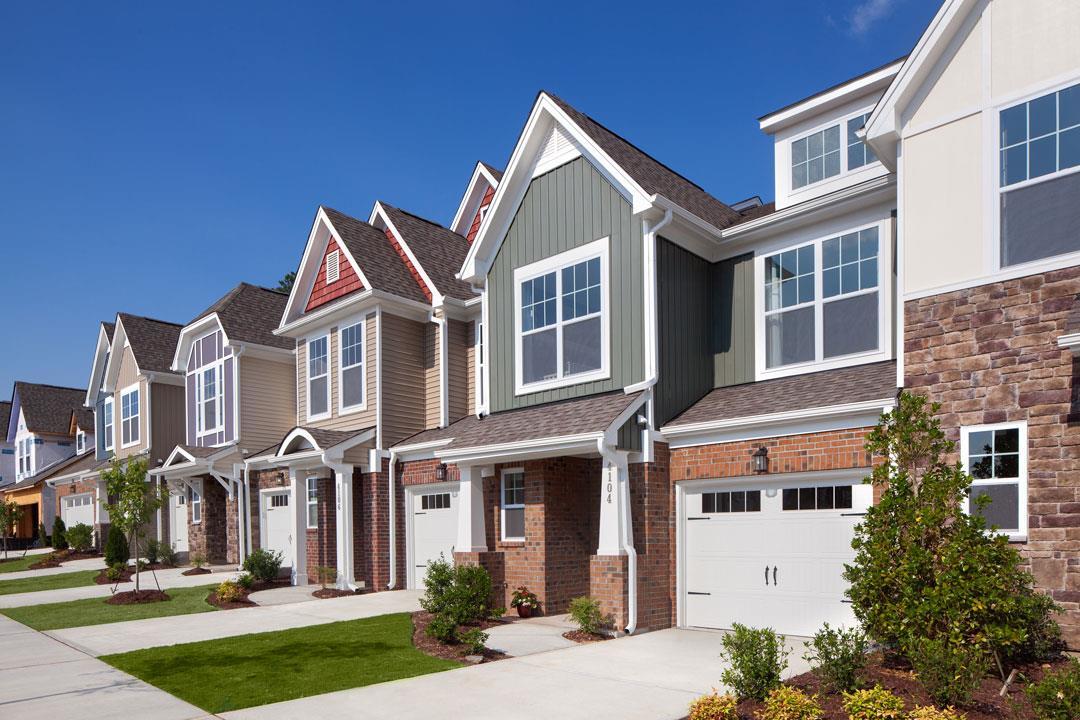Should I Buy a Fixer-Upper, New Construction, Single Family Home or Town Home?
When you first think about buying a home, you probably have in mind exactly what you want. But as you dig into your budget, you’ll start to decide what you’re willing to pay for and what isn’t worth the money to you. As you make those plans you will realize that different types of homes will offer different benefits.
But every type of home also has drawbacks. Some of them will be apparent to you. For example, we all know that you won’t have a yard in a condo. But some drawbacks you may not have considered.
The following 4 types of homes are available in our market and offer many different lifestyle options.
1. Buying a Fixer-Upper
Let’s face it. From Chip and Joanna Gaines to TikTok trends, the fixer-upper looks like a romantic vacation. Even people who don’t have a tight budget are wondering if they could buy something a little rough and coax it back to life. But nothing is as easy (or as cheap!) as it looks on the screen.

Ellen’s 1920’s Farmhouse Renovation. The original bead board and wood beams were hiding beneath 1950’s ceiling tiles.
The Pros of a Fixer Upper
1. You like personalization – If you don’t feel like a home is yours until you replace the counter tops, paint the entire thing in a color of your choice and install all new light fixtures, a fixer upper may be for you.
2. You’re a handi-person – Some people simply enjoy working with their hands. If adding new moulding and beadboard, laying tile and coaxing a new lawn from brown stubble and bare earth feels more like a hobby than employment to you, you may really enjoy purchasing a distressed property.
3. Lower home price – This one goes in both the pro and con section. Yes, it is true that a distressed property will sell for less money than a move-in ready property. However, the cost of renovations can often outstrip what you would have paid for an already updated home. Of course, if someone else does the work, it won’t be exactly how you would have done it. But not all updates have a return on the investment. If someone else does the work, they take the hit on the cost of it, not you.
4. Fixer uppers, by their nature, are usually older homes in more established neighborhoods. Mature trees and the character of older architecture can’t be found in newer homes and neighborhoods.
The Cons of a Fixer Upper
1. Higher Cost of Ownership – As I said in the pro section, in the most popular price points in the Triangle, distressed homes may cost you more, once repairs and updates are completed, than if you had bought an existing home that had already been updated.
2. Discomfort During Construction – Building projects can take time. Living in a construction zone is not fun. The deconstruction picture above was a home I was living in during the project. It took much longer than expected. While quaint at first, our “mini-kitchen” set-up in the hallway with a microwave and toaster oven, and dish-washing station in the bathtub, became tiring after about a day. We do have some great memories about that time, though!
In all seriousness, especially if you have young children, a time-intensive job or other lifestyles that will make it difficult to devote the extra time it takes to living in an unfinished home, you might want to delay remodeling until a different phase of life.
2. Buying Move-in Ready Single Family

Move in ready homes are the most desirable because they often give you the most positive features: updated and modern features in an established older community.
The Pros of a Move-in Ready Home
1. The biggest pro of a move-in ready home is obvious: it’s move -in ready! Moving is stressful enough. Making the transition to a new home easier is a big benefit to any buyer.
2. Limits Future Spending – I won’t say that you won’t have to spend ANY more money after you move in. Homes require maintenance and upkeep. But a move-in ready home has taken care of all those little issues over the years and so the maintenance costs will be less than a fixer upper. Generally speaking, you should budget 1-2% of the purchase price of your home per year for home maintenance. For a move in ready home it will likely be on the lower end of that spectrum.
The Cons of a Move-in Ready Home
1. Price – Obviously, a move-in ready home will be more desirable for most buyers so there will be more competition. You may have to negotiate more aggressively for a move in ready home.
2. Colors and features – Because the pervious owners have done the work, they have also chosen everything they have replaced. You may love the location, layout and price of the home, but maybe prefer cool colors over warm ones. Sometimes a fresh coat of paint can personalize it and a few new decor items can bring out a different hue in the cabinets or countertops.
3. Buying an Attached Home

Harrison Bluffs Town Homes, North Cary
Attached homes (townhomes, villas and condos) offer a unique lifestyle that won’t appeal to everyone. But there are some great benefits to attached homes and some specific things you should watch out for if you are going to purchase one.
The Pros of Buying an Attached Home
1. Attached homes all have less maintenance just due to the limited lawn area. However, not all attached home communities are maintenance free. How much maintenance you will be responsible for varies by community.
In some communities you will only be responsible for what is inside your walls. In this case, the HOA will maintain your roof, siding, landscaping and all community spaces. But it is also possible that the HOA only maintains some of these things. The roof, but not the siding, for example. Always check the bylaws before your purchase and decide if the HOA fees are reasonable for what they cover.
2. Closer Neighbors – This can be a pro or a con, depending on your personality. Having neighbors nearby can be good for developing friendships and feeling part of a community. Or if you value privacy or quiet, being this close to neighbors could be a con.
3. Price – Attached homes are less expensive than similar single family homes. But keep in mind that town homes come in all price points, styles and locations. A town home will be cheaper than a home of similar price, size, age and location with similar features and amenities. Make sure you’re comparing apples to apples.
The Cons of Buying an Attached Home
1. Unexpected Fee Increases – Sometimes HOA communities don’t budget well or manage their finances well enough to provide the promised maintenance. Ideally, maintenance fees collected from inception are set aside in preparation for needed updates. However, that doesn’t always happen. And when it doesn’t happen or when the savings isn’t sufficient to provide, HOA boards will vote to raise monthly fees.
2. Noise – Town homes usually have much better soundproofing than apartments. However, when living in close quarters with shared walls, your bound to hear noise more often than a single family home.
3. Outdoor Play Space – Many of us have memories of childhood that includes riding bikes through the neighborhood and playing with friends in neighborhood streets. There are many neighborhoods in the Triangle that are still like this. However, it would be dangerous to allow kids to play in the parking lot of an attached home. Neighborhood play in these communities should definitely be limited to common areas, playgrounds and greenspaces.
4. Parking – And speaking of parking lots, sometimes parking is limited in town home communities. Before making a purchase, ask about assigned spaces and extra guest parking.
For other information about buying a condo, see Conor MacEvilly’s 9 Critical Questions to Ask When Buying a Condo
4. Buying New Construction
If you’re thinking of buying a new home, you have likely walked through one of the many new home communities in the Triangle.
The Pros of Buying New Construction
1. Choose Your Colors – If you make an offer early enough in the process, you can choose your colors, countertops, cabinets and fixtures exactly to your liking!
2. Lower Maintenance Costs – Because the home is new, there is no possibility of delayed maintenance and the costs they bring. However, keep in mind that just because the home is new that doesn’t mean there won’t be anything wrong with it. You should always get a pre-drywall home inspection when purchasing a new home.
3. Build Instant Friendships – It’s fun to move into a new neighborhood when everyone is new! Many people find this a great opportunity to build new friendships and start neighborhood traditions that last many years.
The Cons of Buying New Construction
1. Location – Like everything else in real estate, the location of the home determines a great deal of the cost. New construction in the most convenient and desirable locations, is often very expensive. A high quality new home with premium features can be had at a reasonable cost, usually at the expense of a convenient location.
2. Landscaping/Establishing a Lawn – New home completion dates aren’t organized around the best time to establish a lawn. If your home is completed in the dead of winter or the hottest part of the summer, the lawn seeded by the builder may not survive until the appropriate season for grass planting.
Even if it is grass season, establishing a new lawn from dirt (or more likely, clay) and seed is a long process. Think of it a little bit like nurturing a puppy. It’ll need attention multiple times a day, food and water – just enough but not too much. If it rains before the seed germinates, the seed will get washed away and you’ll have to start over. Pray that the temperature doesn’t get too hot right after germination or the little seedlings will fry! And for goodness sakes, don’t let anyone walk on it!
3. Cost – New Construction is usually more expensive than existing homes. And if they aren’t, you should seriously question the workmanship in the product. New construction homes are paying today’s labor rate for all work done, today’s shipping costs and todays land costs. All of those things are more expensive than they were even 10 years ago.
4. Property Value/Resale – This is particularly important if you are buying in a new subdivision with a lot of new construction to choose from. New construction prices can be the most volatile to shifts in the market. And if you need to resell in a few years and builders are still building, it may be difficult to sell. It’s always a good idea to find out how long it will be before the neighborhood is fully built out. Even if the neighborhood is built out, if there is a lot of land available nearby, there are likely other new home communities that will compete with you when you want to sell.
5. Completion Dates – Many things can impact new construction completion dates. Weather can keep workers from completing some tasks. Lengthy waits for the building inspector can bring construction to a stand still. If you’re waiting for the electrical permit to be issued and inspection to be completed, the drywall crew can’t very well begin their part of the project. Or shipping might be delayed. Shipping can be impacted by weather and disasters far from your area, slowing down the building process and delaying your move-in date.
In new construction, delays are inevitable. You should always consider the closing date on the contract an estimate and assume it will take at least several weeks longer than anticipated. This means keeping your current living situation flexible, if possible. Or having temporary housing lined up just in case.
Sharing is Caring! Please SHARE if you find this content useful!

